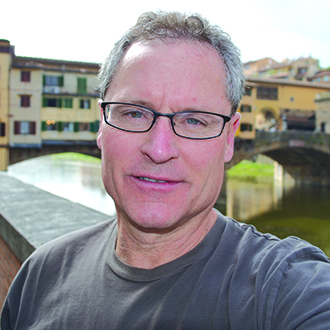Not long ago when I visited a wine estate on a trip to the Languedoc-Roussillon region of Southern France, the owner talked to me about the importance of Catalan traditions, of which I knew nothing.
At one point I asked him, “Do you consider yourself more French or more Catalan?” Without hesitation he said emphatically, “Catalan. Of course.”
I just got back from a wine-centric trip to Catalonia, a region in northeast Spain south of the Pyrenees. The Catalan region used to be a separate protectorate extending into current-day France, established many centuries ago as a buffer against invading forces, mostly the Moors. Catalonia was its own region until the Spanish Civil War when Franco essentially annexed it and made the Catalan government, language and customs illegal. The language is similar to the French dialect Provençal, a mix of Spanish and French, with some Italian thrown in for good measure.
Because of its strategic location on the western edge of the Mediterranean Sea, the region has always done well and its people have been industrious and creative. Today there is a secessionist movement much like the Basque secessionist movement a few years ago. Many locals feel they give way more than they get from the Spanish government and imagine an independent existence would be preferable. Still, Catalonia is a vibrant region with villages and cities — Barcelona is the capital — displaying Greek, Roman, Muslim and Christian influences, to name a few.
I am a firm believer in experiential family vacations in which everyone is exposed to other cultures, languages, food and history. It gives you a broader worldview and a personal stake in studying a multitude of subjects in school. The Spanish tourism board (winetourismspain.com) has done an amazing job of putting together wine routes of various lengths and areas in Catalonia. There are organized bus trips to wineries, or you can travel by car or train.
Just a generation ago, much of the wine made in Spain was consumed locally or was sold in bulk to other regions. I visited Castell del Remei, the first winery in the region with its own brand. Said proprietor Tomàs Cusiné, “In Spain, we are going through a second revolution. We planted Cabernet Sauvignon in the 1920s. Now we are going back to planting indigenous varieties like Garnatxa (also known as Grenache) and Monastrell. And more local wineries are welcoming visitors.” A visit to one of these smaller wineries will likely find you talking and touring with the owner or the winemaker.
We also visited and tasted the wines of Clos Pons, which began as a massive olive tree farm and olive oil producer. It has more than 200 varieties of olive trees, with Arbequina being the specific variety of olive oil that chefs treasure and love most for finishing and flavoring dishes.
Clos Pons planted its first vines in 2005 and 2008 was its first vintage wine. And just as in the south of France, the predictable and thunderous Tramontane winds make it easy for olive farms in Catalonia to be organic and sustainable. Both regions tend not to get a lot of rain or humidity and the winds will dry things quickly, reducing any need for fungicides. We visited the mega Cava house, Codorníu and tasted a variety of its sparkling wine styles. Its Cavas are made in the traditional method and are both delicious for any occasion and affordably priced. Kids will love the theme park-style train/tram ride through the underground wine-aging tunnels. Perelada is another wonderful estate, complete with a castle, a casino and a golf course. The castle’s restaurant is not to be missed.
There is so much more to the region. There are very large estates and producers. There are mom-and-pop boutique producers. There are vineyards and production houses dating from the Middle Ages and wineries that have sprung up just recently. There is easy access to the Mediterranean beaches, medieval villages, botanical gardens, hiking, ballooning, snorkeling and kayaking. There are street festivals featuring food, music, art and even a festival dedicated to the dreaded phylloxera pest that destroyed vineyards worldwide. In short, there is something, many things, for everyone. It is a vacation and experience that will change someone forever, for the better.
Write Doug at doug@dougpaulding.com.


